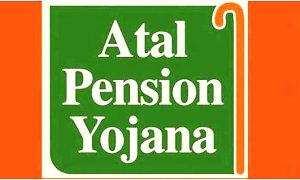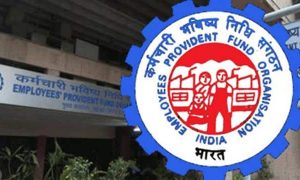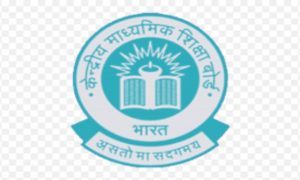Today, education costs are rising, making it unaffordable for many. Education inflation, or the rise in education costs, is happening at twice the rate of general inflation. A recent BankBazaar report, ‘Inflation, Education, & Your Child’, mentions that if current inflationary trends continue, education inflation, which currently hovers around 11% to 13%, could double every 6-7 years.
While the cost of education can be a significant financial burden, those looking to pursue higher education in India or abroad can consider an education loan or a personal loan to bridge the gap in funds. But which of these two is a better choice? In this piece, we will discuss some key differences between these loans to help you decide which one may be better to fund higher studies.
Read More: PPF vs FD: Choosing the Right Savings Option for Your Financial Goals
Purpose of the loan: ‘End-use’ is the main difference between an education loan and a personal loan. Education loans are specifically offered to cover academic costs such as tuition fees, accommodation, and study materials like laptops, books, equipment, etc. Personal loans, however, usually have no restrictions in terms of their end use and can be used for various financial needs, including for funding education.
Loan quantum: With education costs rising, savings are no longer sufficient to fund higher education expenses. An education loan has a distinct advantage over personal loans regarding the amount you can borrow. While personal loans typically offer a maximum loan amount of around Rs 25 lakh, education loans provide a relatively larger loan quantum, ranging from Rs 7.5 lakh to Rs 1.5 crore. The education loan offering a larger quantum easily trumps what personal loans provide, especially considering that pursuing higher education abroad is far more expensive.
Read More: NPS Lite: Do this to get a guaranteed monthly pension
Adhil Shetty, CEO of BankBazaar.com, says, “When choosing a loan to fund academic expenses, you must first estimate the total costs you will likely incur. This will give you a fair idea of the amount you need to borrow. Also, take time to assess whether or not you can afford to repay the loan. For instance, a four-year Bachelor of Technology (B.Tech) course at a private Indian university can set you back by approximately Rs 10 lakh. In contrast, a Bachelor of Medicine and Surgery (MBBS) course is usually more expensive, hovering around Rs 50 lakh. If your child wants to pursue graduate studies abroad, it could easily set you back by Rs 1 crore or more in the future. That is something you must be prepared for before applying for the loan.”
Interest rates: Personal loans are typically unsecured loans which require no collateral. But, owing to increased risk, lenders usually charge higher interest rates, ranging from 10.25% to 24%, on such loans. On the other hand, interest rates of secured and unsecured education loans start from 8.10% and 10.50%, respectively. Some lenders also offer concessions on education loan rates for women applicants, which may differ from personal loans.
Read More: Mutual Fund calculator: How to get Rs 1 lakh/month for 25 years and full amount back
Loan tenure: Compared to education loans, lenders offer personal loans for shorter tenure of up to 5 years. On the other hand, education loans provide a significantly longer repayment tenure ranging from 5 to 15 years. The longer tenure can help make it easier and more affordable for borrowers to service the loan.
Moratorium: In terms of repayment, education loans usually offer more relaxed terms in the form of a moratorium where the borrowers can defer repayments on loan for the duration of their course and 6-12 months after completing their course. This allows the new graduates ample time to secure a job and an income, making it easier for them to begin repaying the loan. Personal loans, in contrast, do not offer any repayment moratorium. Repayments must be made within the loan’s tenure, shorter than an education loan.
Prepayment charges: Prepayment is an effective way to reduce one’s debt burden. In the case of education loans, borrowers can make prepayments on the loan without attracting any penalty. But, in the case of personal loans, lenders typically charge a prepayment penalty ranging from 2% to 5% + GST on the outstanding loan amount. The penalty may vary based on the outstanding loan amount, loan tenure, and the lender.
Tax benefits: Borrowers can avail of tax deductions on the interest part of their education loan under Section 80E of the Income Tax Act. There is no maximum limit applicable to this deduction. However, you can avail the deduction on interest payments for eight years or until you pay interest, whichever happens earlier.
Moreover, suppose you remit up to Rs 7 lakh overseas via an education loan. In that case, the Tax Collected at Source (TCS) under the Liberalized Remittance Scheme (LRS) is only 0.5%, compared to the 5% applicable on funds remitted via any other source. On the other hand, personal loans do not offer tax benefits.
BT’s Take
You can draw two main conclusions from the detailed comparison above. Given their smaller amounts and loan tenures, personal loans are better suited for short-term needs such as home renovation, wedding financing, consolidating debt, or vacation. You can get a personal loan without collateral, but the interest rates depend on your credit score and repayment history. However, education loans are a far better financing solution for academic pursuits, owing to their longer tenure, lower rates and easier repayment terms.





































